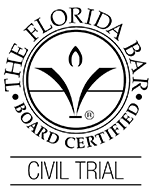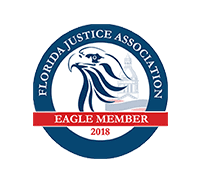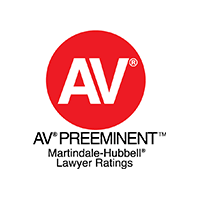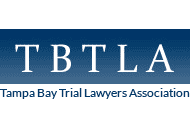Required Insurance
In Florida, all drivers and motor vehicle owners are legally required to carry certain types of vehicle insurance. The insurance that drivers and owners of motor vehicles are required to have are:
- $10,000 of insurance for Property Damage[1]; and
- Personal Injury Protection insurance (“PIP” or “No-Fault Insurance”). [2]
Insurance That Is Not Required
Florida does not require owners and drivers to carry insurance for bodily injury. This means that drivers and vehicle owners who do not carry bodily injury insurance will only have coverage for $10,000 of Property Damage associated with the auto accident that they were involved in. If you are injured in an auto accident with a driver or owner without bodily injury insurance, the only sources of recovery that you will have are PIP insurance and Uninsured Motorist Coverage.
Statistics of Drivers Without Enough Insurance
As of 2015, Florida has the highest number of uninsured and underinsured drivers in the United States.[3] Around 26 percent of Florida’s drivers are uninsured or underinsured.[4] This means that one in four drivers will not have sufficient insurance to cover the damages that result from a motor vehicle accident.
What Is Uninsured and Underinsured Motorist Coverage
Uninsured and Underinsured Motorist insurance (“UM”) protects you in the event that you are in an accident with another driver who either does not have any insurance, or does not have enough insurance to cover your damages. In the event you are involved in this type of accident, UM will provide you with insurance benefits for your medical needs, lost wages, and potentially pain and suffering associated with your accident.
I Have Full Coverage Insurance, Do I Have UM Coverage
The term “full coverage” is a misleading phrase with auto insurance. With “full coverage” auto insurance, it is likely that the policy you have only includes what is required by Florida Statutes, which are:
- $10,000 of insurance for Property Damage[5]; and
- Personal Injury Protection insurance (“PIP” or “No-Fault Insurance”). [6]
UM coverage is an added option that you must elect to purchase, or if you decide not to purchase, then the insurance company must inform you in writing what benefits you are not receiving.[7]
In order to determine whether or not you have UM coverage, you must look at your Insurance Declarations Page and Insurance Policy.
How to Purchase UM Coverage
If you elect to purchase Bodily Injury insurance, you will be able to purchase Uninsured and Underinsured Motorist insurance (“UM”). Under Florida Statutes, your UM insurance cannot be higher than your Bodily Insurance coverage.[8] Therefore, you must have Bodily Injury insurance to have UM insurance. This also means that if you chose to have $10,000 in Bodily Injury insurance, you will be able to purchase up to $10,000 in UM insurance; and if you chose to have $100,000 in Bodily Injury insurance, you will be able to purchase up to $100,000 in UM insurance.
What If I Don’t Want UM Coverage
Your insurance company must provide you with written notice of UM insurance coverage, and must inform you of the coverages you are losing if you chose to not purchase it.[9] You should make an informed decision when choosing whether or not to purchase UM insurance coverage. It is strongly advised that you look into Uninsured and Underinsured Motor insurance coverage. This will provide you and your loved ones insurance coverage if you are involved in an auto accident with a driver or vehicle owner who carries the minimum amount of insurance that is required by the State of Florida.
Types of UM Coverage
There are two different categories of UM insurance:
- Stacking UM coverage; and
- Non-Stacking UM coverage.[10]
Stacking Uninsured and Underinsured Motorist covered is an option that allows you to increase the policy limits for your injury coverage. With Stacking UM coverage, your policy limits will be multiplied (stacked) by the number of vehicles you are insuring.
Comparing Stacked and Non-Stacked UM Coverage
Here is an example of Stacking UM coverage:
Person A has Stacking UM limits of $100,000 per person, and $300,000 per occurrence. Person A has 3 vehicles that he or she is insuring. With Stacking UM coverage, Person A’s policy limits would now be $300,000 per person, and $900,000 per occurrence.
Here is an example of Non-Stacking UM coverage:
Person B has Non-Stacking UM limits of $100,000 per person, and $300,000 per occurrence. Person B also has 3 vehicles that he or she is insuring. However, with Non-Stacking UM coverage, Person B’s policy limits would remain the same at $100,000 per person, and $300,000. Person B’s UM coverage is not multiplied by the number of vehicles that he or she is insuring.
What Damages Are Covered With UM
UM and Bodily Injury insurance operate very similarly. Both types of insurance will provide protection for medical expenses, lost wages, and non-economic damages – such as pain and suffering in certain circumstances. The difference between the two coverages is that Bodily Injury insurance covers damages to other injured parties in an accident when you are liable; UM insurance covers damages that you suffer in an accident when someone else is liable.
Who Is Covered With UM
With UM insurance, there are two different classes of insureds:
- Class 1 insured; and
- Class 2 insured.
Class 1 insureds include the following people:
- The named insured (the policy holder);
- The named insured’s spouse; and
- Resident relatives.
UM benefits will be provided to a Class 1 insured whether they are:
- Operating, or are a passenger in, a vehicle insured on the policy;
- Operating, or are a passenger in, someone else’s vehicle (not insured on the policy); or
- Injured by a vehicle as a pedestrian.[11]
Class 2 insureds include the following people:
- Drivers that had permission to operate the vehicle; and
- Passengers that had permission to occupy the vehicle.[12]
In order for a Class 2 insured to receive UM benefits, the vehicle they were occupying must be insured with UM coverage.
With Class 1 insureds, the named insured on the policy will be covered, as well as spouses and any relatives that reside with the insured. Being a Class 1 insured also means that the insurance coverage will follow the injured party. This means that an injured person will receive UM benefits, even if they were a passenger in another person’s vehicle, or if the insured is hit by a vehicle while on a bicycle.
With Class 2 insureds, benefits are provided to the insured vehicle. This means that in order to receive benefits provided under the insurance policy, the vehicle that was involved in the motor vehicle accident must be listed as having UM coverage.
Conclusion
Florida has the highest number of uninsured or underinsured drivers at 26 percent. While UM is not a required coverage under Florida law there are a number of benefits to having UM coverage. Uninsured and Underinsured Motorist insurance can provide you benefits, even if you are involved in an accident with someone without any auto insurance. UM will provide you with benefits such as payment of medical expenses, lost wages, and in certain circumstances pain and suffering. UM coverage will protect you, your spouse, your resident relatives, your vehicle, and anyone that has permission to drive your vehicle.
Author:
[1] Fl. Stat. 324.022 (2019).
[2] Fl. Stat. 627.733 (2019).
[3] Id.
[5] Fl. Stat. 324.022 (2019).
[6] Fl. Stat. 627.733 (2019).
[7] Fl. Stat. 627.727(1) (2019).
[8] Fl. Stat. 627.727(2) (2019).
[9] Jervis v. Castaneda, 243 So.3d 996 (Fla. 4th DCA 2018).
[10] Fl. Stat. 627.727 (2019).
[11] Fl. Stat. 627.727 (2019).
[12] Id.

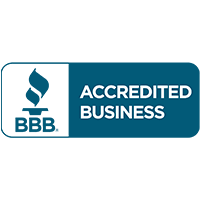
![cftla-member[2]](https://www.1800askdave.com/wp-content/uploads/2022/03/cftla-member2.png)
![cftla-member[3]](https://www.1800askdave.com/wp-content/uploads/2022/03/cftla-member3.png)

